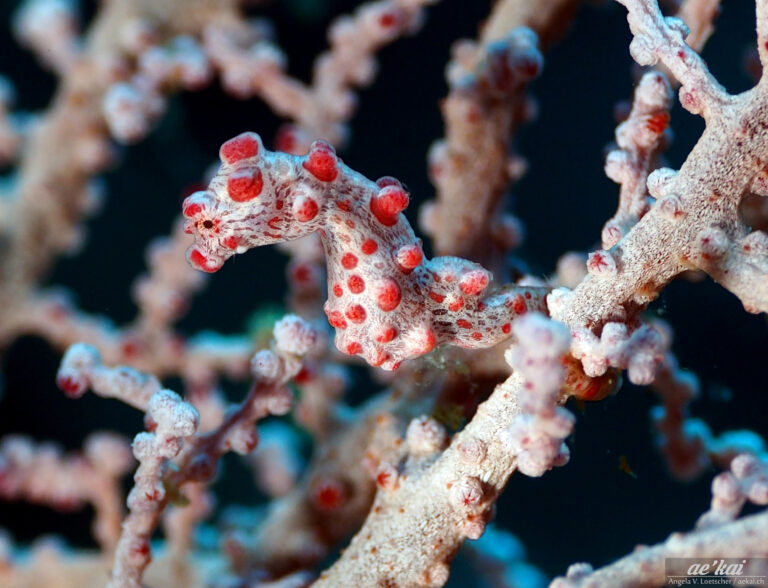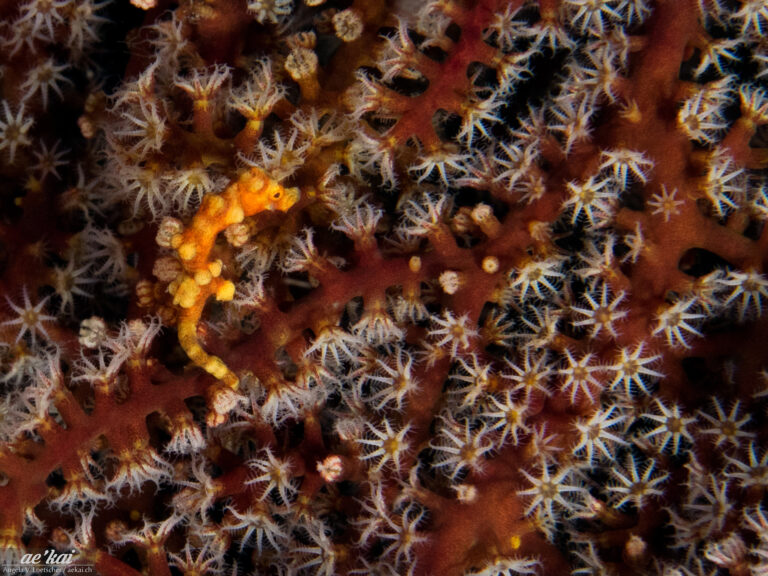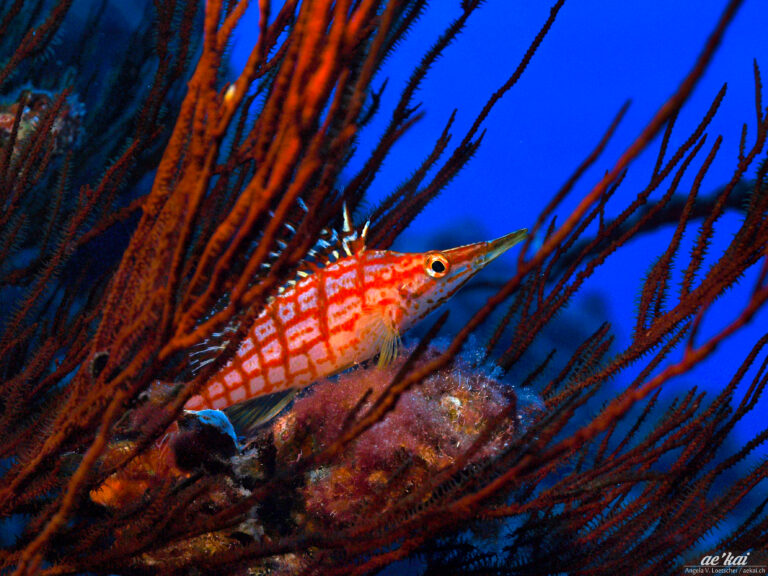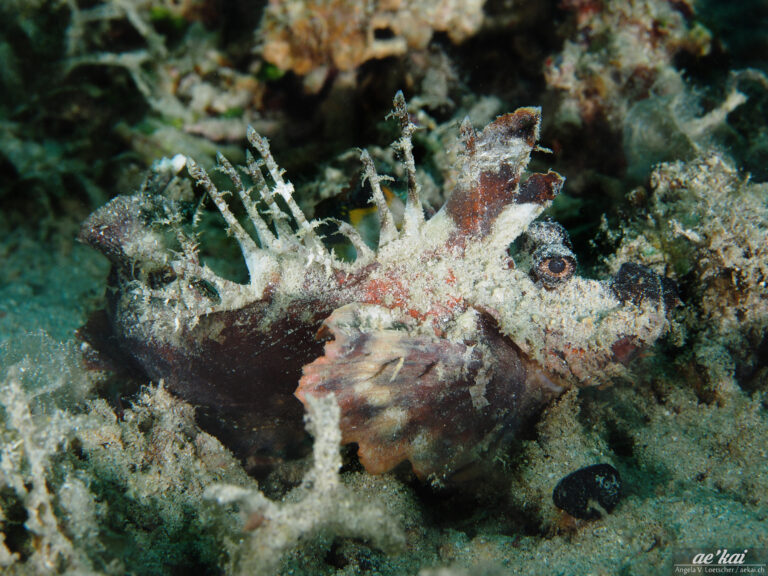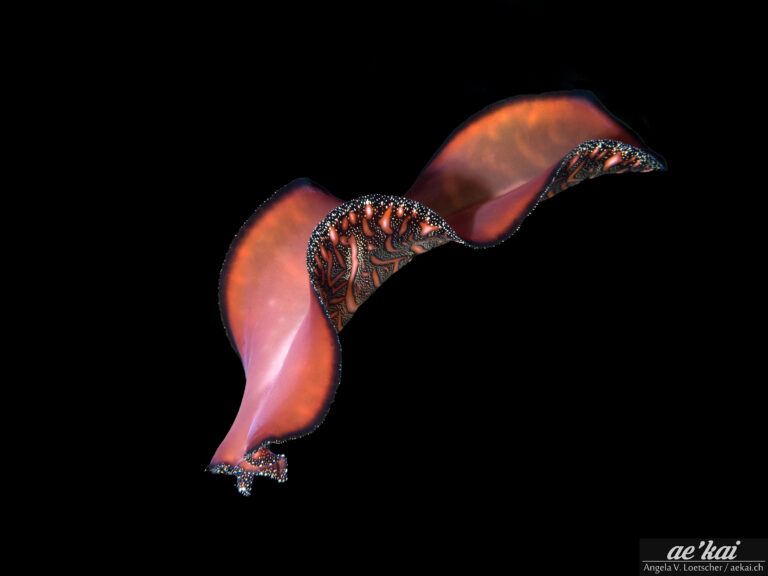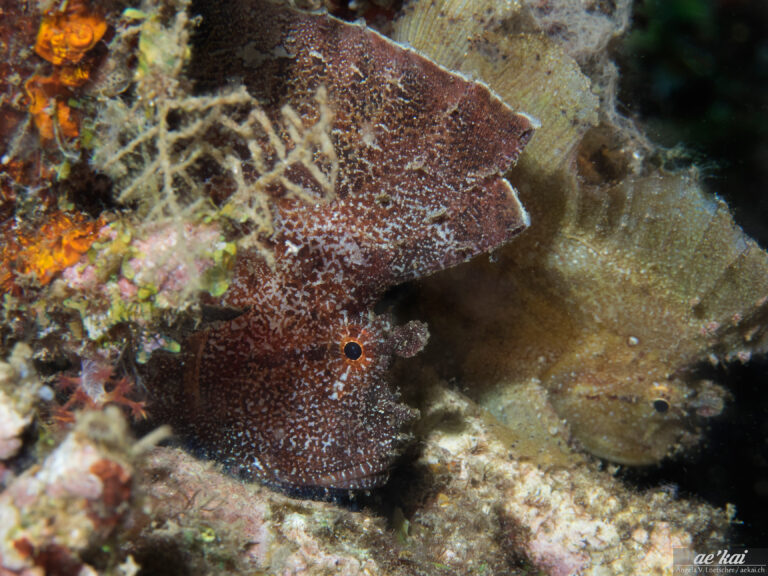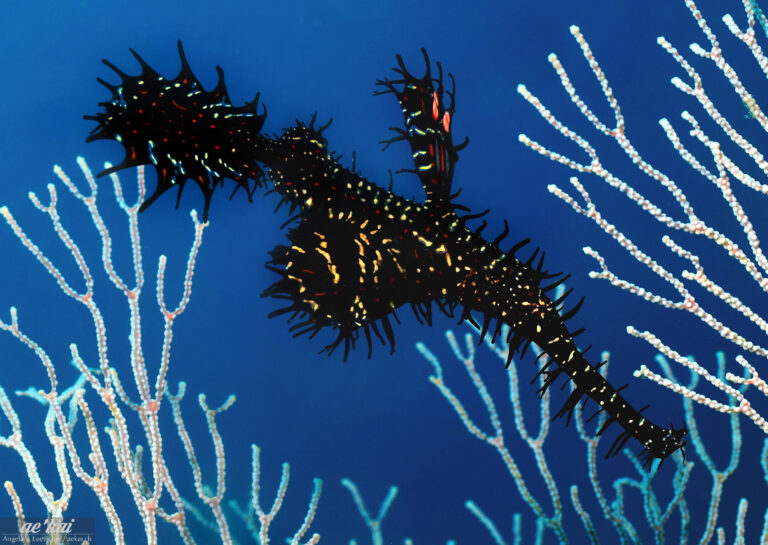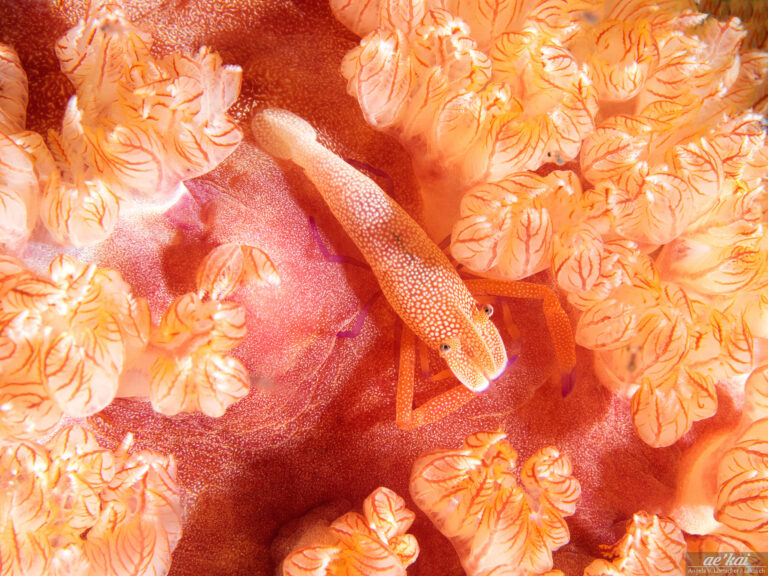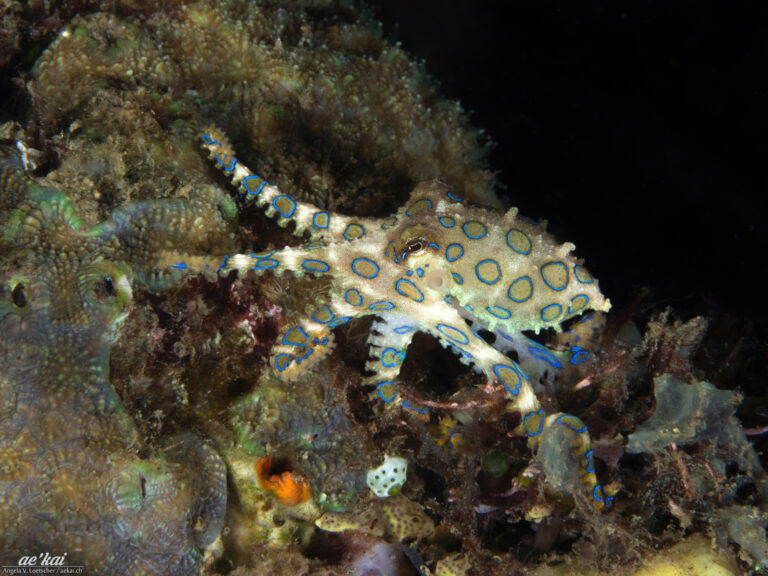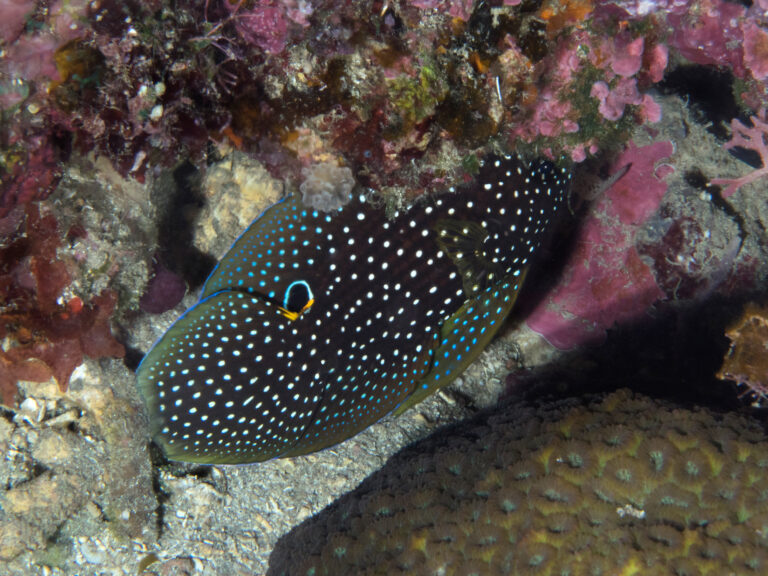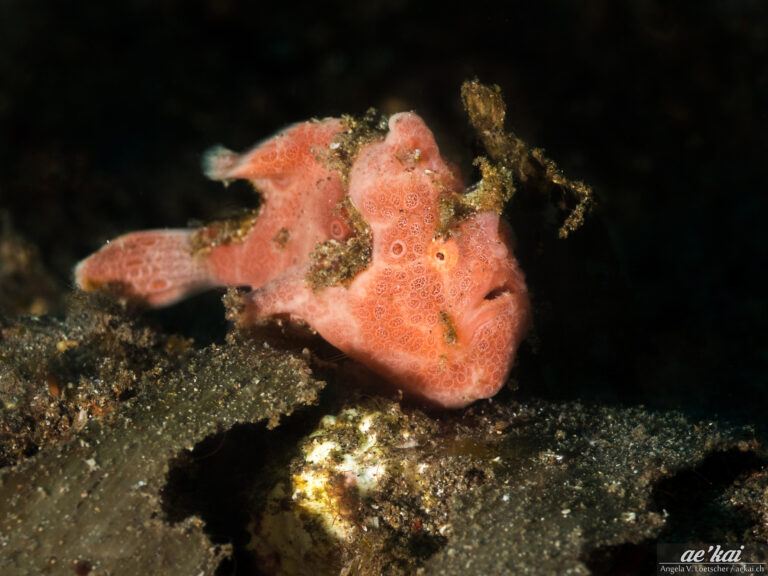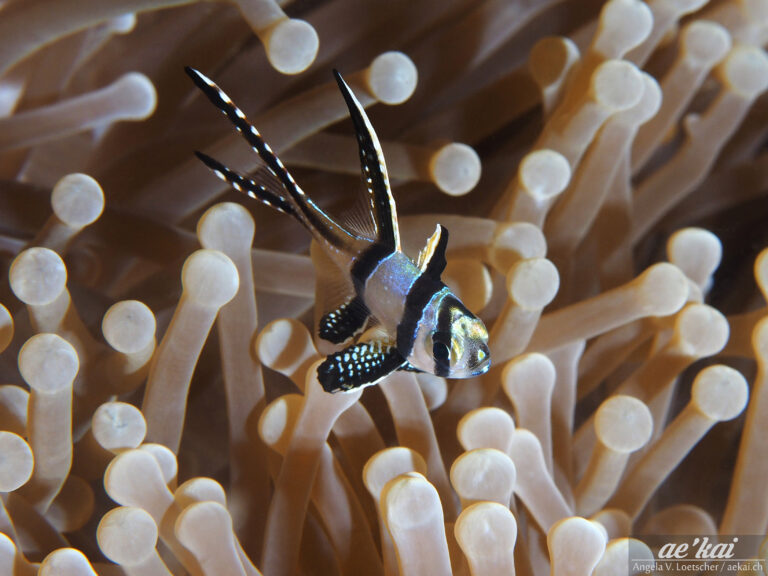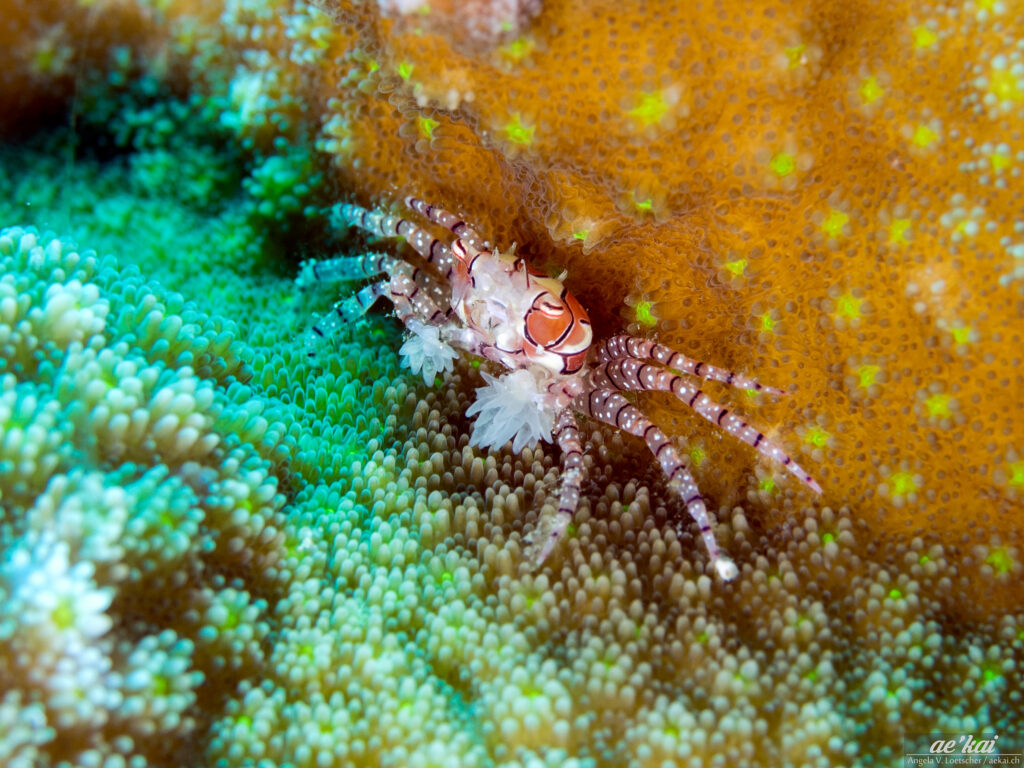
EN: Boxer Crab | Pom-Pom Crab
DE: Boxerkrabbe | Pom-Pom Krabbe
Family
Pebble Crabs
(Xanthidae)
Size
max. 2.5 cm
Diet
Omnivore
Distribution
Indo-Pacific
Lybia tessellata is a small crab (up to 2.5cm) of the family Xanthidae, which lives on flat, sandy, pebbly or gravelly bottom of the Indo-Pacific.
Its carapace (technical term for the hard covering of the upper side of the body) has a trapezoidal shape with a clear serrated edge. Since the carapax does not allow for growth, boxer crabs must “skin” themselves, i.e. they must discard the old and meanwhile too small shell. They can even replace one or the other lost limb during skinning. The carapace is divided into sections of different coloration, which with its network of geometric, dark lines is somewhat reminiscent of stained glass. The legs also pick up the dark lines, are dotted white and have short hairs. They have five pairs of legs. The scissors are long and narrow. L. tessellata is an omnivore.
These pretty and cute little animals are hard to find. And are therefore considered rare.
Behavior
All animals of the species Lybia are known as pom-pom crab or boxer crab due to their habit of carrying tufts of anemones around in their claws (reminiscent of boxer gloves or cheerleader pom-poms).
Their mutualism with anemones makes them particularly interesting. Mutualism is characterized by the fact that anemones give the crab a unique way of defending itself against predators, while the anemones make it easier for the crab to get more food than if it were to settle down.
If the boxer crab is being harassed, it simply boxes with the anemone in front of it until it gets rid of the attacker. Boxer crabs use anemones of at least three species, including Bundeopsis spp. and Triactis. By carrying the anemones around, the crab has no scissors free for food intake, whereby the scissors are anyway so much adapted to the anemones that they are too narrow and fine to cut food pieces out of a prey. It solves the first problem by catching small pieces of food with the anemone, then pulling the anemone through the mouth and so it gets to eat anyway. But for the survival of the crab the anemone is not important and therefore you can find boxer crabs sometimes with corals or sponges in their claws. But since the food intake seems to be more difficult then, it can be assumed that they will soon change back to an anemone. The second problem is compensated by an adaptation of the second pair of legs, with which they can cut pieces and then guide them to the mouth opening.
Reproduction
Like most crabs, boxer crabs are egg-laying animals. The eggs are always carried by the female at the front of the belly, where they are fertilized and carried out. Due to the bright red coloration of the eggs, you cannot miss them – provided you find one at all. During the 13-15 days in which the eggs mature, L. tessellata eats more food. This is a particularly dangerous time for the small crab. As soon as the larvae are ready to hatch, the boxer crab climbs to the highest possible point in its environment and releases up to 250 larvae per hour. This process can easily take several hours. After hatching, the larvae are left to their own devices.
Whoever sees such a little animal should take some time to observe it closely. It is really very amusing to watch the 2.5 cm tall crab trying to drive you away with boxing movements!
